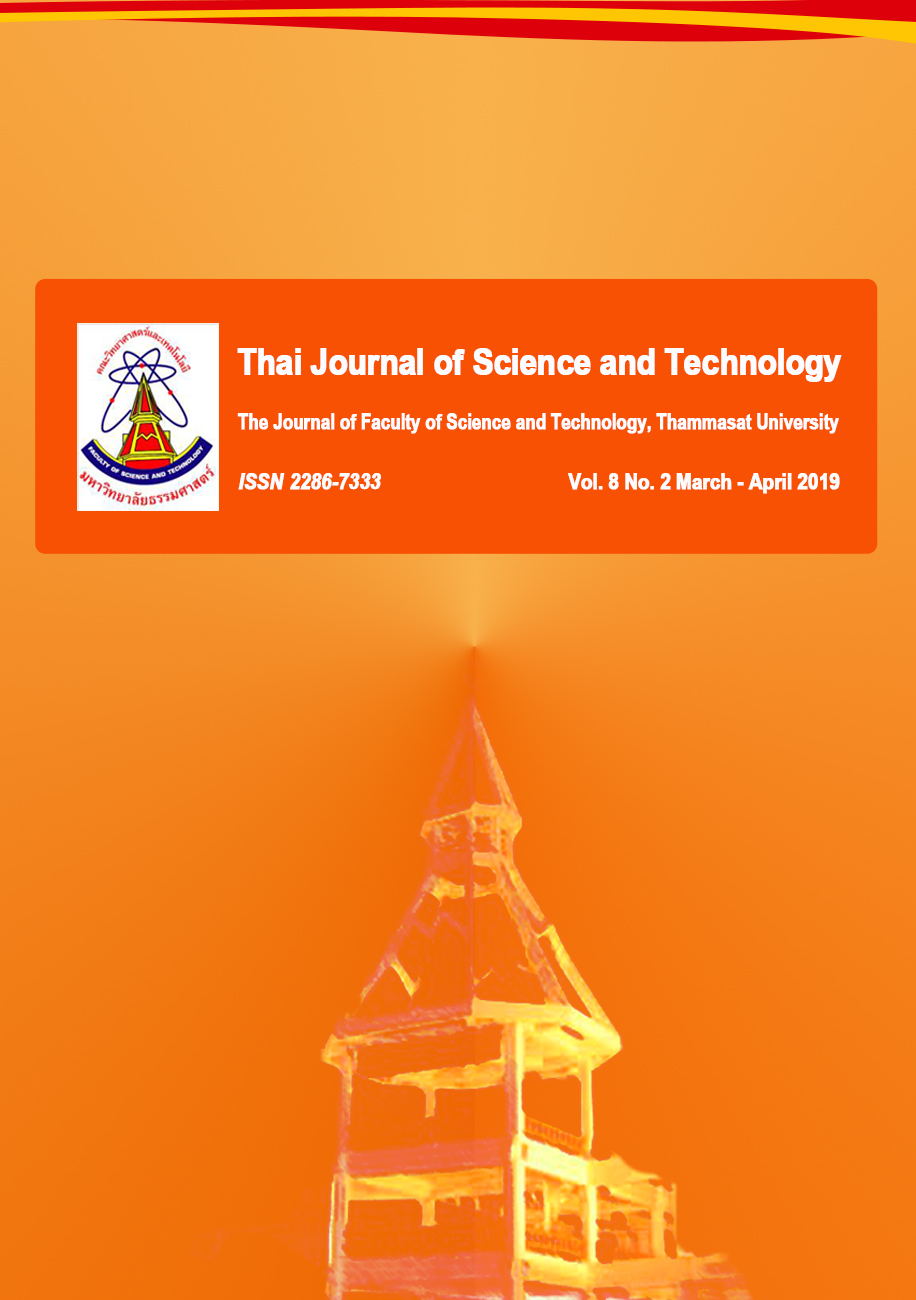Training and Auditing Material Effectiveness for Good Manufacturing Practices and Critical Control Points of Drinking Water Production Plants in Cambodia
Main Article Content
บทคัดย่อ
Abstract
The major public health problem in Cambodia is inaccessibility of safe drinking water; people therefore must rely on bottled drinking water, especially the 20-liter pack size. Consequently, Cambodian officers must increase their knowledge on production processes and hazard control. In this study, the training and auditing materials were prepared based on the Codex Alimentarius guideline and related researches. The materials were then translated into Cambodian, and evaluated for its effectiveness in order to be used for monitoring the quality and safety of Cambodian drinking water. A two-day lecture was conducted, attended by about 50 participants who were pre-tested for their basic knowledge. For each part of the lecture, a post-test was conducted. After the lecture session was completed, 16 plants were audited by an expert and the trainees. Effectiveness of the training material was evaluated based on performance in the post-test and auditing. Results revealed that post-test scores were significantly higher (p < 0.05) than those of the pre-test for all parts. Scores from 39 out of 73 audits of the trainees were not significantly different from those of the expert. The auditing performance was significantly correlated with post-test score, trainee affiliation, location of the affiliation, and the GMP status of the plant (p < 0.05). Information on the post-test score and auditing performance indicated that the passing score for the post-test should be 60 %. The training and auditing materials were thus effective in improving trainee knowledge, which should capable them on monitoring quality and safety of drinking water in future.
Keywords: Cambodia; drinking water; safety; training; auditing
Article Details
บทความที่ได้รับการตีพิมพ์เป็นลิขสิทธิ์ของคณะวิทยาศาสตร์และเทคโนโลยี มหาวิทยาลัยธรรมศาสตร์ ข้อความที่ปรากฏในแต่ละเรื่องของวารสารเล่มนี้เป็นเพียงความเห็นส่วนตัวของผู้เขียน ไม่มีความเกี่ยวข้องกับคณะวิทยาศาสตร์และเทคโนโลยี หรือคณาจารย์ท่านอื่นในมหาวิทยาลัยธรรมศาสตร์ ผู้เขียนต้องยืนยันว่าความรับผิดชอบต่อทุกข้อความที่นำเสนอไว้ในบทความของตน หากมีข้อผิดพลาดหรือความไม่ถูกต้องใด ๆ
เอกสารอ้างอิง
Bryan, F.L. and World Health Organization, 1992, Hazard Analysis Critical Control Point Evaluations: A Guide to Identifying Hazards and Assessing Risks Associated with Food Preparation and Storage, World Health Organization, Geneva.
Chavasit, V., Teerawat, O., Norapoompipat, Y. and Parinyasiri, T., 2003, Development of Quality Assurance System for small-Scale Production of Bottled Drinking Water, Chiang Mai J. Sci. 30(3): 141-152.
Codex Alimentarius, 2001, Codes of Practice: Code of Hygienic Practice for Bottled/ Packaged Drinking Waters (Other than Natural Mineral Waters), Available Source: http://www.fao.org/input/download/standards/392/CXP_048e.pdf, December 23, 2017.
Daniel, W.W. and Cross, C.L, 2013, Biostatistics: Basic Concepts and Methodology for the Health Sciences, 10th Ed., John Wiley & Sons, Inc., New Jersey.
FAO and WHO, 2003, Assuring Food Safety and Quality: Guidelines for Strengthening National Food Control Systems, Available from: https://www.fao.org/3/a-y8705e.pdf, December 23, 2017.
FAO-WHO, 1997, Codex Alimentalius: General requirement (food hygiene), FAO and WHO, Rome.
Institute of Food Science and Technology (UK), 1991, Food and Drink-good Manufacturing Practice: A Guide to Its Responsible Management, Institute of Food Science and Technology, London.
Luetsch, K. and Burrows, J., 2016, Certainty rating in pre-and post-tests of study modules in an online clinical pharmacy course – A pilot study to evaluate teaching and learning, J. BMC Med. Educ. 16: 267- 275.
Montgomery, K.S, 2002, Nutrition column: An update on water needs during pregnancy and beyond, J. Perinat. Edu.c 11(3): 40-42.
Nestle Waters, 2014, Purified Water Enhanced With Minerals for Taste: 12 Steps to Quality Assurance, Available Source: https://www.nestle-watersna.com/content/documents/pdfs/nwna_12_step_purified_water_process.pdf, April 12, 2018.
Phnompenhpost, 2018, Ten Dead, Nearly 100 Others Hospitalized after Drinking Contaminated Water, Available Source: https://www.phnompenhpost.com/national/ten-dead-nearly-100-others-hospitalised-after-drinking-contaminated-water, May 08, 2018.
Saskatchewan Ministry of Environment, 2003, Quality Assurance And Quality Control For Water Treatment Utilities, Available Source: http://www.saskh2o.ca/dwbinder/epb242.pdf, April 12, 2018.
United Nation, 2016, Sustainable Development Goal 6: Ensure availability and sustainable management of water and sanitation for all, Available Source: https://sustainabledevelopment.un.org/sdg6#targets, December 23, 2017.
White, D., Hutchens, C.A., Byars, P. and Antizar, L.B., 2013, The effect of seasonal climate on bottled water distribution in rural Cambodia' water science and technology, J. Water Supply 13: 798-807.
Zuane, J.D., 1990, Drinking Water Quality: Standards and Control, Van Nostrand Reinhold, New York.


